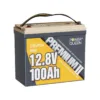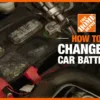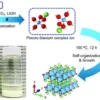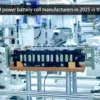Are you exploring Lithium Iron Phosphate (LFP) batteries for your energy needs? Choosing the right battery can transform your electric vehicle, solar setup, or off-grid system. At li-ess, we’ve seen firsthand how LFP batteries deliver unmatched safety and longevity, but they come with trade-offs like lower energy density. In this guide, we’ll break down the pros and cons of LFP batteries, compare them to alternatives like NMC, and share expert insights to help you make a smart choice. Ready to navigate the world of LFP battery technology? Let’s get started!
Introduction to Lithium Iron Phosphate LFP Batteries
What Are Lithium Iron Phosphate LFP Batteries
If you’ve heard about lithium-ion batteries, you might be curious about Lithium Iron Phosphate (LFP) batteries—a standout type of lithium-ion battery gaining traction today. LFP batteries use lithium iron phosphate (LiFePO4) for their cathode and typically a graphite anode. This unique chemical makeup offers a stable and safe energy storage solution with solid electrochemical performance.
- LiFePO4 cathode: Provides thermal and chemical stability.
- Graphite anode: Ensures efficient charging and discharging cycles.
A Brief History of LFP Batteries
Developed in the 1990s, LFP battery technology was somewhat overshadowed in the early days by other lithium-ion chemistries. But over the last decade, it’s become a favorite in the energy world thanks to companies like Tesla and BYD. These pioneers helped push LFP into mainstream use, especially as the demand for safer and longer-lasting batteries grew.
Common Applications of LFP Batteries
Today, LFP batteries power a range of applications, proving their versatility:
- Electric Vehicles (EVs): Popular among standard-range models for safety and cost.
- Solar Energy Storage: Ideal for homes and businesses needing reliable off-grid or backup power.
- Industrial Use: Help run forklifts, power tools, and large-scale storage systems.
Why LFP Batteries Matter in Today’s Energy Landscape
The world is shifting fast toward sustainable energy, and battery storage plays a huge role. Here’s why LFP batteries are becoming essential:
- Sustainable energy demand: LFP offers a cleaner, cobalt-free option that reduces ethical and environmental concerns.
- Safety: Their chemical stability lowers risks of fires or thermal runaway, making them safer for home and industrial use.
- Cost-effective energy storage: With affordable raw materials and long lifespan, LFP batteries help reduce total energy storage costs.
- Renewable energy integration: Perfect for storing solar and wind power, enabling reliable access to clean energy.
- Electric vehicle markets: LFP is increasingly chosen for EVs focused on durability and everyday usability.
In this fast-evolving market, understanding the pros and cons of lithium iron phosphate batteries is key to making smart energy choices. Whether you’re considering energy storage for your home, fleet, or business, LFP batteries offer a compelling balance of safety, cost, and longevity. And brands like li-ess are innovating to unlock even more value from this powerful chemistry.
Key Advantages of Lithium Iron Phosphate Batteries

Enhanced Safety for Peace of Mind
One of the biggest reasons people choose Lithium Iron Phosphate (LFP) batteries is their superior safety. Thanks to strong thermal and chemical stability, LFP batteries are much less likely to experience thermal runaway or catch fire compared to other lithium-ion types like NMC. Unlike NMC batteries, LFP cells don’t release oxygen when they malfunction, which significantly lowers fire risks. This makes them ideal for home energy storage, electric vehicles, and any application where safety is a priority.
Long Lifespan for Lasting Performance
LFP batteries boast an impressive cycle life ranging from 2,500 up to 10,000 full charge cycles. By contrast, lead-acid and NMC batteries typically only last between 300 and 3,000 cycles. This means LFP batteries maintain capacity better over time, even with frequent charging—perfect for daily use in off-grid solar systems and EVs. For U.S. customers looking for a long-term energy solution, this durability translates to fewer replacements and less hassle.
Cost-Effective Power Storage
Thanks to the use of abundant and affordable materials like iron and phosphate, LFP batteries are cheaper to produce than many alternatives. When you factor in their long lifespan and minimal maintenance needs, the overall cost of ownership drops significantly. For Americans managing their energy budgets, LFP batteries offer a powerful mix of upfront value and long-lasting savings, especially in solar storage or residential backup systems.
Environmental Benefits Appeal to Green Consumers
LFP batteries are free from cobalt and nickel, materials often linked to ethical and environmental issues overseas. Their non-toxic composition makes recycling simpler and safer, important for reducing the environmental footprint of battery disposal. For those focused on sustainability, LFP technology provides a cleaner, more responsible alternative in the growing market for renewable energy storage.
High Discharge and Temperature Tolerance
Another advantage of LFP batteries is their ability to handle high discharge currents reliably. This makes them great for power-hungry tools, forklifts, and many electric vehicles. Plus, they perform well in temperatures up to 60°C (140°F), which is a big plus in hotter U.S. climates. While some batteries struggle with heat, LFP cells keep going strong, making them dependable for demanding industrial or residential uses.
With these strengths—safety, longevity, cost savings, environmental friendliness, and robust performance—LFP batteries stand out as a smart choice for many American consumers and businesses alike. Whether it’s powering your electric vehicle or storing solar energy at home, LFP batteries deliver clear benefits worth considering.
Limitations of Lithium Iron Phosphate Batteries
While Lithium Iron Phosphate (LFP) batteries come with plenty of benefits, they also have some limitations that are important to consider — especially if you’re looking for the best fit for your energy needs here in the U.S.
Lower Energy Density Compared to Alternatives
One of the biggest drawbacks of LFP batteries is their lower energy density, typically around 90–160 Wh/kg. In comparison, Nickel Manganese Cobalt (NMC) batteries offer between 150–260 Wh/kg. What this means:
- Bulkier battery packs: LFP batteries take up more space to store the same amount of energy.
- Impact on EV range: For electric vehicle owners, this can translate to shorter driving ranges compared to high-density NMC batteries.
- Portability challenges: Devices like laptops or power tools might be heavier or larger if powered by LFP cells.
Higher Initial Manufacturing Costs
Although LFP batteries benefit from abundant and inexpensive materials, the manufacturing process can be costlier than some other battery types. These costs are coming down but can still affect upfront prices. This is something to weigh if you want lower initial expenses, though the long lifespan often balances this out over time.
Lower Nominal Voltage
LFP cells typically have a nominal voltage of about 3.2 volts per cell, which is lower than many lithium-ion variants. This lower voltage means:
- More cells are required to reach the same overall battery pack voltage.
- This can add complexity and slight increases in size and weight to the system.
Sensitivity to Cold Weather
With freezing temperatures common in many parts of the U.S., it’s important to know that LFP batteries don’t charge as efficiently in the cold without additional warming systems. This can affect:
- Performance during winter months.
- Charging speed and overall battery life if exposed to extreme cold frequently.
Limited Market Availability
Lastly, LFP batteries aren’t as widely used as NMC batteries yet, so you might find fewer options on the market, especially for certain consumer electronics or high-performance EVs. This can limit your choices if you’re hunting for specific features or brands.
Bottom line: While LFP batteries offer safety, longevity, and environmental perks, their lower energy density, voltage, and cold-weather performance are factors worth keeping on your radar. If size, weight, or extreme climate operation is critical, weighing these downsides alongside their benefits will help you make the smartest choice.
LFP Batteries Compared to Other Technologies
LFP vs Nickel Manganese Cobalt NMC Batteries
When it comes to Lithium Iron Phosphate (LFP) batteries vs Nickel Manganese Cobalt (NMC) batteries, the main tradeoff lies between safety and cost versus energy density:
- LFP batteries offer superior safety with excellent thermal stability. They are less likely to overheat or catch fire compared to NMC batteries. This makes LFP the safer choice, especially for everyday use in electric vehicles (EVs) and home energy storage.
- Cost-wise, LFP batteries are generally more affordable because they use abundant, low-cost materials like iron and phosphate instead of costly cobalt and nickel found in NMC cells.
- However, NMC batteries pack more energy per pound (higher energy density), usually between 150–260 Wh/kg compared to LFP’s 90–160 Wh/kg. That means NMC batteries can deliver longer driving ranges for EVs or smaller sizes for the same battery capacity.
- This explains why NMC remains popular for high-performance EVs requiring long ranges and lightweight designs.
- Meanwhile, LFP batteries fit well for grid storage, affordable EVs, and applications where safety and long cycle life matter most. For instance, electrified urban commuters benefit from LFP’s durability and cost savings.
LFP vs Lead Acid Batteries
Comparing LFP batteries with traditional lead-acid batteries highlights a big step forward for renewable energy storage and industrial use:
- LFP batteries have much higher efficiency—about 98% efficiency versus 80% for lead-acid. This means less energy loss during charging and discharging.
- The lifespan of LFP batteries is significantly longer, often reaching thousands of cycles, while lead-acid batteries usually need replacement after a few hundred cycles. This saves on replacement costs and maintenance.
- However, lead-acid batteries do come with a lower initial cost, making them tempting for budget-conscious buyers.
- But the higher replacement frequency and lower performance of lead-acid batteries often offset their upfront savings.
- For customers in the US looking for reliable, long-lasting solutions—like off-grid systems or backup power—LFP batteries provide better value over time.
Choosing between LFP and other battery chemistries comes down to your priorities:
- Go for LFP if you want safety, longevity, and cost-effectiveness for everyday EVs, solar storage, or industrial equipment.
- Choose NMC if your priority is maximum energy density and extended vehicle range.
- Consider lead acid only if upfront cost is your main concern and you can accept shorter lifespan and efficiency.
At li-ess, we focus on maximizing the benefits of LFP technology to deliver safe, efficient, and affordable batteries tailored to the US market—perfect for powering your home, work, or electric ride with confidence.
Applications of LFP Batteries in Everyday Use

Electric Vehicles and LFP Battery Benefits
Lithium Iron Phosphate (LFP) batteries are making waves in the electric vehicle (EV) market, especially among standard-range models like the Tesla Model 3 and many BYD vehicles. Thanks to their enhanced safety and long battery lifespan, LFP batteries have become a go-to choice for urban commuters who prioritize reliability and durability over maximum range. These batteries offer:
- Stable performance in daily stop-and-go city driving
- Reduced risk of fire or overheating for peace of mind
- Cost savings through longer cycle life and lower maintenance
For Americans living in cities or suburbs, where short trips and frequent charging are common, LFP-powered EVs provide a solid balance of performance and safety.
Renewable Energy Storage with LFP Batteries
LFP batteries have become a favorite for solar and wind energy storage solutions due to their long lifespan and chemical stability. They excel in both off-grid and microgrid setups, helping homeowners and businesses:
- Achieve energy independence without relying on the traditional grid
- Store renewable energy safely over many years without heavy degradation
- Manage peak energy demands with high discharge rates that maintain consistent power
For those installing home solar or community wind systems, LFP’s reliability means fewer replacements and less hassle over time.
Industrial and Consumer Use Cases
LFP batteries fit perfectly in industrial settings and consumer applications where dependable power and high discharge are critical. Examples include:
- Forklifts and other electric industrial vehicles that demand consistent power over long shifts
- High-performance power tools benefiting from rapid energy delivery and long runtimes
- Home backup power systems that require safe, durable batteries for emergencies or outages
LFP’s inherent safety and extended life reduce downtime in these heavy-use scenarios — a big plus for US businesses and homeowners needing steady, cost-effective energy solutions.
By choosing LFP batteries from li-ess, customers tap into a technology designed for safety, longevity, and consistent performance — essentials for today’s evolving energy needs across transportation, renewable energy, and industrial sectors.
Innovations and Future Trends in Lithium Iron Phosphate Batteries
Advances in LFP Battery Technology
Lithium Iron Phosphate (LFP) batteries have made significant strides in recent years. One of the most notable improvements is the energy density, which has increased to around 205 Wh/kg in newer designs. This boost helps shrink battery size while maintaining capacity, making LFP batteries more competitive with other lithium-ion types.
Recycling methods have also improved, particularly with hydrometallurgy, a process that recovers valuable materials efficiently and with less environmental impact. This advancement supports the growing demand for sustainable and eco-friendly battery solutions, addressing concerns around lithium battery recycling and material reuse.
Market Growth and Expansion
The LFP battery market has been growing rapidly, especially in electric vehicles (EVs). In 2022, LFP accounted for 31% of the EV battery market share, and projections suggest it could exceed 60% by 2024. This surge is fueled by LFP’s balance of safety, cost-effectiveness, and lifespan—key qualities for mass-market and grid storage applications.
Production facilities are expanding aggressively across North America and Europe, ensuring better availability and reduced supply chain risks for U.S. customers. This expansion aligns with the increasing adoption of renewable energy and the need for reliable energy storage solutions in local markets.
li-ess’s Commitment to LFP Innovation
At li-ess, we are fully committed to harnessing the strengths of LFP technology. Our batteries are designed with a focus on:
- Safety: Enhanced thermal stability to prevent overheating and fires.
- Longevity: Cycle life optimized to withstand thousands of charge-discharge cycles.
- Efficiency: Consistent high performance in varied temperature ranges and demanding conditions.
By combining advanced LFP chemistry with robust manufacturing, li-ess provides solutions tailored for U.S. customers looking for eco-friendly, cost-effective battery options that stand the test of time. Our products support everything from electric vehicles to renewable energy storage and industrial uses, ensuring you get reliable power no matter the application.
Choose li-ess to benefit from the latest LFP innovations made with sustainability and performance in mind. For more about how LFP technology can fit your energy needs, check out our in-depth discussion on the environmental hazards of lithium mining and how eco-conscious production makes a difference.
Making an Informed Choice with li-ess LFP Batteries
Choosing the right Lithium Iron Phosphate (LFP) battery involves more than just picking the cheapest option. To get the most value and performance, consider these key factors:
Factors to Consider When Choosing an LFP Battery
- Energy Needs: Assess your power requirements carefully. Are you powering an electric vehicle (EV), a home solar setup, or industrial equipment? Knowing your energy demand helps determine the battery size and capacity.
- Budget and Long-Term Savings: While LFP batteries can have higher upfront costs compared to lead-acid or some lithium-ion types, their long lifespan and low maintenance make them cost-effective in the long run.
- Safety Priorities: If safety is a major concern—such as in residential or urban environments—LFP batteries stand out for their superior thermal stability and low risk of fire.
- Application Type: Different uses require different battery features. LFP performs well in steady, long-cycle applications like renewable energy storage and standard-range EVs, whereas other chemistries might suit high-performance needs better.
Why Choose li-ess LFP Batteries
At li-ess, our LFP batteries are designed with the US market in mind, combining reliability, efficiency, and eco-conscious manufacturing. Here’s why li-ess is a smart choice:
- High Quality and Durability: Built to last through thousands of cycles, minimizing replacements and downtime.
- Safety First: Thermal and chemical stability provides peace of mind for home and industrial users alike.
- Eco-Friendly Design: Our batteries avoid toxic materials like cobalt and nickel, making recycling easier and reducing environmental impact.
- Tailored to US Needs: From urban commuters to off-grid homeowners, li-ess batteries offer the balance of cost, safety, and performance American customers demand.
Explore li-ess LFP battery solutions today to find the right fit for your energy storage needs. Whether it’s powering your EV or supporting your renewable energy system, li-ess delivers dependable, safe, and cost-effective energy storage you can count on.










Add comment